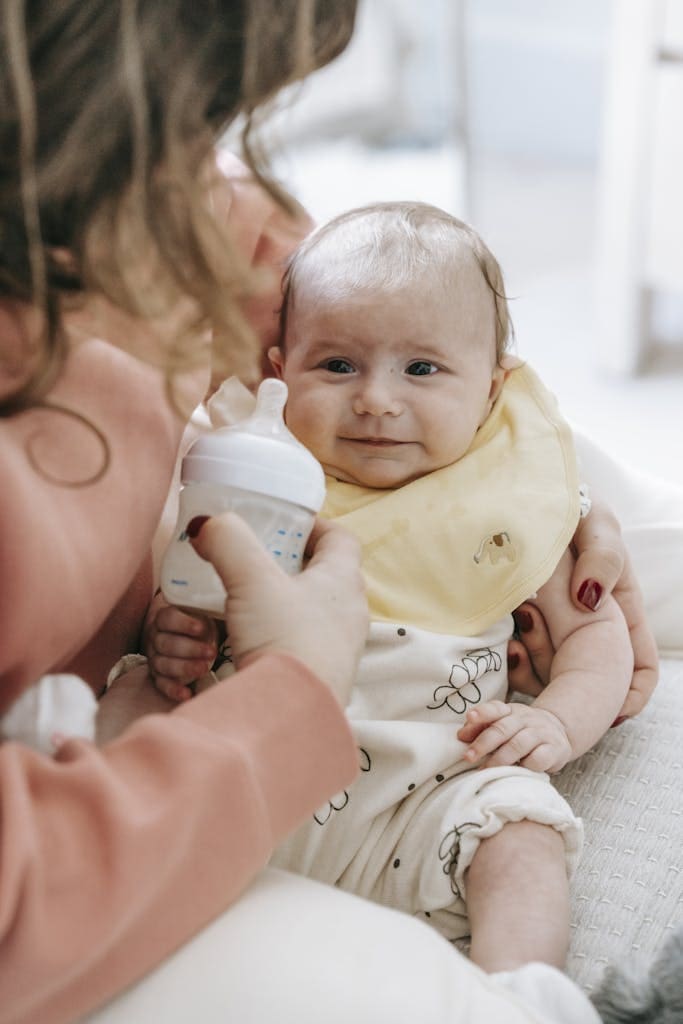The Best Bottles for Breastfed Babies: How to Choose the One That Works for You
When it comes to choosing a bottle for your breastfed baby, the truth is, there’s no single “best” option. Every baby is different, and what works for one might not work for another. The key is to find a bottle that supports a deep latch, prevents excess air intake, and allows for a feeding experience that mimics breastfeeding as closely as possible. But If I had to choose, I would say that these are the best bottles for breastfed babies to start with.
Disclosure: This post contains affiliate links. If you click on a link and make a purchase, I may earn a small commission at no extra cost to you. I only recommend products I genuinely trust and believe will be helpful to my readers.You can read more about the affiliate disclosure here.
What to Look for in a Bottle for Breastfed Babies
Many bottles on the market promise to be “just like the breast,” but the reality is that no artificial nipple will perfectly replicate the feel of breastfeeding. Instead of falling for gimmicks, here’s what actually matters:
1. Nipple Shape and Texture
Avoid bottles with wide, stiff nipples that force a shallow latch. A good bottle will encourage babies to open their mouths wide and engage in a natural sucking pattern. Look for soft, pliable nipples that allow babies to control the milk flow. Soft, gradual slopes on the nipple design can help mimic the breast and encourage proper oral development.
Some babies prefer a wider base, while others may do better with a more traditional narrow nipple. If your baby struggles with latching, experimenting with a couple of different shapes can be helpful. Additionally, some bottles feature anti-colic vents that help reduce air intake, which can be beneficial for gassy or reflux-prone babies.
2. Flow Preference Over Nipple Confusion
The idea of nipple confusion is misleading. Babies don’t get confused between the breast and bottle—they develop a flow preference. If a bottle flows too quickly, they may begin to prefer the easier option over breastfeeding. Choose slow-flow nipples that mimic the natural flow of breast milk.
Slow-flow nipples require babies to work a little harder to get milk, similar to breastfeeding. This helps keep their oral muscles strong and prevents them from developing a preference for the bottle over the breast. Some bottles offer variable flow options, allowing you to adjust the rate based on your baby’s needs as they grow.
3. Responsive Bottle Feeding Matters
Many parents are familiar with paced feeding, where the bottle is held horizontally, and the baby takes breaks naturally. However, responsive bottle feeding goes a step further, ensuring that caregivers pay close attention to the baby’s cues, allowing them to pause and stop when needed. This approach promotes better digestion and helps maintain a healthy breastfeeding relationship.
With responsive feeding, parents and caregivers should look for signs of readiness to feed, such as rooting or sucking motions, and stop feeding when the baby shows signs of fullness. Holding the bottle in a way that mimics breastfeeding positioning—keeping the baby upright and allowing them to actively suck—can help create a more natural transition between breast and bottle.
4. Avoid Bottles That Create Lazy Latching Habits
A baby should work to extract milk from a bottle just as they do from the breast. Bottles with wide, firm nipples often encourage shallow latching, which can cause frustration when switching between breast and bottle.
Choosing a bottle that encourages a deep latch will help prevent issues like gassiness, discomfort, or difficulty switching back to the breast. Parents should also avoid bottle nipples that collapse too easily, as this can create frustration and lead to inefficient feeding habits.
Join The Email List!
Recommended Best Bottles for Breastfed Babies
While no bottle is perfect, a few brands consistently get it right. These options prioritize proper latch, controlled milk flow, and overall feeding support:
1. Dr. Brown’s Bottles
Dr. Brown’s bottles are a popular choice for breastfed babies because of their venting system, which helps reduce air intake and prevent gas. They come with slow-flow nipples that support a more controlled feeding experience. These bottles are especially helpful for babies prone to reflux or colic.
2. Thyseed Bottles
Thyseed bottles feature soft, flexible nipples that encourage a deeper latch, making them a solid option for babies who switch between breast and bottle. The natural design helps babies transition seamlessly between breast and bottle, reducing frustration.
3. Momi Bottles
Momi bottles are designed with breastfed babies in mind, offering a slow and steady flow rate. Their ergonomic design also makes them easy for little hands to hold as they grow. The anti-colic venting system is an added bonus for preventing gassiness and discomfort.
Must-Have Bottle Accessories
Finding the right bottle is just the first step—proper cleaning and maintenance are just as important. Here are some must-have accessories to keep your baby’s feeding supplies in top shape:
- Good Bottle Drying Rack – Ensures bottles dry thoroughly and hygienically. Proper airflow prevents mold and bacteria buildup.
- High-Quality Bottle Brush – Helps clean every nook and cranny of the bottle and nipple to prevent residue buildup. Look for a brush with a soft but firm bristle design to clean without damaging the bottle.
- Extra Slow-Flow Nipples – Having a few backups can be helpful, especially in case of wear and tear or if your baby prefers a different shape.
- Bottle Warmer – This can make feeding much more convenient.
Tips for Introducing a Bottle to a Breastfed Baby
- Time It Right: Ideally, introduce a bottle between 3-6 weeks when breastfeeding is well established.
- Have Someone Else Offer the Bottle: Babies may refuse a bottle if mom is nearby and they can smell breast milk.
- Try Different Temperatures: Some babies prefer milk at body temperature, while others don’t mind it slightly cooler.
- Use Responsive Feeding Techniques: Hold your baby upright and watch for hunger and fullness cues.
- Be Patient: If your baby refuses a bottle, don’t force it. Try again at a different time of day or with a different bottle.
Final Thoughts on Best Bottles for Breastfed Babies
There’s no one-size-fits-all answer when it comes to choosing a bottle for your breastfed baby. The goal is to find a bottle that supports breastfeeding, prevents excessive air intake, and aligns with your baby’s feeding preference. Stick with trusted brands like Dr. Brown’s, Thyseed, and Momi, and focus on responsive feeding rather than just the bottle itself.
At the end of the day, fed is best—whether from breast, bottle, or both. Trust your instincts, observe your baby’s cues, and choose the feeding method that works best for your family. If one bottle doesn’t work, don’t stress—keep experimenting until you find the right fit for your baby.
Liked this post? Don’t forget to Pin it!






